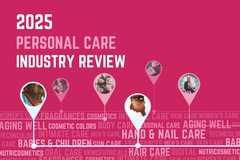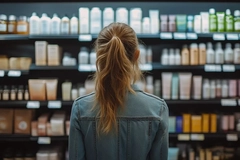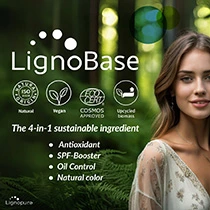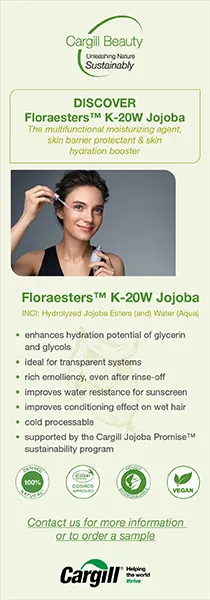dsm-firmenich experts talk sustainability strategy to meet regulatory and consumer needs

The evolving consumer landscape, with its strong focus on environmentally sustainable practices, is pushing the beauty industry to rethink its sourcing and solutions from start to finish.
Personal Care Insights speaks with Meriem Saber, director of sustainability, and Ulla Letinois, sustainability manager at Beauty & Care dsm-firmenich, about how biodegradable, low-carbon, and responsibly sourced ingredients provide solutions to regulatory and consumer expectations of environmental integrity.
The ingredients company representatives tell us that new sustainability frameworks and consortia are emerging rapidly, but not all are equally robust — some risk of diluting environmental safeguards or creating rebound effects.
The nutrition, health, and beauty giant highlights its SYN line of cosmetic ingredients, such as SYN-TACKS, SYN-UP, and SYN-COLL CB, developed using Green Chemistry principles. These guidelines aim to design chemical products and processes to reduce or eliminate the use and generation of hazardous substances, focusing on waste prevention and energy efficiency.
The SYN portfolio addresses various skin concerns, including wrinkles, firmness, and elasticity, by promoting collagen production, stabilizing the skin barrier, and reducing signs of aging.
Where does the drive for ecological ingredients in cosmetics come from?
Saber and Letinois: The push is coming from all sides: regulators, brands, and increasingly, consumers. In the EU, frameworks like the Carbon Border Adjustment Mechanism and the Ecodesign for Sustainable Products Regulation are raising the bar for environmental transparency. These policies require brands to account for emissions across the entire value chain, including upstream suppliers.
At dsm-firmenich, we see this as an opportunity to lead. We are reducing our carbon footprint with a clear roadmap: 25% reduction by 2030 and Net Zero by 2045. A key part of this journey is actively scouting for bio-based raw materials that can enhance naturality and reduce carbon intensity, without compromising performance.
 dsm-firmenich aligns its sustainability strategy with evolving EU environmental regulations and the consumer demand for transparency. Our vitamins portfolio is a great example. Already best-in-class in carbon footprint, we are further exploring renewable, natural-origin sources and biotech-based production methods. These efforts support regulatory readiness and meet growing customer demand for science-backed, low-impact solutions.
dsm-firmenich aligns its sustainability strategy with evolving EU environmental regulations and the consumer demand for transparency. Our vitamins portfolio is a great example. Already best-in-class in carbon footprint, we are further exploring renewable, natural-origin sources and biotech-based production methods. These efforts support regulatory readiness and meet growing customer demand for science-backed, low-impact solutions.
What are the primary shifts in eco-friendly beauty? Where do you expect it to continue?
Saber and Letinois: In recent years, we have seen a clear shift from fossil-based energy and raw materials to more sustainable, bio-based alternatives. At dsm-firmenich Beauty & Care, we are accelerating this transition by adopting renewable electricity, improving energy efficiency, and engaging suppliers to move away from coal-based energy. But the shift goes beyond energy — it’s about embedding sustainability into every stage of ingredient development.
A standout example is our SYN peptides portfolio, which has been fully reformulated using Green Chemistry principles to eliminate trifluoroacetic acid (TFA), a persistent chemical commonly used in conventional synthesis. Achieving a 100% TFA-free portfolio by early 2025 is a major milestone, not only in regulatory readiness but also in setting a new standard for clean, high-performance, natural actives.
We also use life cycle analysis (LCA) to guide innovation from the outset. Looking ahead, we expect continued momentum toward biodegradable, low-carbon, and responsibly sourced ingredients, driven by evolving regulation and growing consumer demand for transparency and environmental integrity.
What steps do beauty brands take to prevent greenwashing?
Saber and Letinois: Avoiding greenwashing starts with transparency and science. At dsm-firmenich, we take a full life cycle approach to sustainability, assessing all 16 environmental impact categories recommended by the European Commission. This ensures we don’t just shift the burden from one stage to another.
We have already conducted LCAs for 92% of our portfolio and aim to reach 100% by the end of 2025. This data informs our innovation platforms — from biotechnology to peptides, hair care, and sun care — so we can design ingredients responsible by design from the beginning. We also share more primary data with customers and engage suppliers to ensure their practices align with our sustainability goals. A key enabler of this transparency is our Imp’Act Card — a pioneering eco-design tool that provides clear, science-based insights into our ingredients’ environmental and social performance. It includes metrics such as carbon footprint, water use, and biodegradability.  dsm-firmenich uses 100% TFA-free green chemistry principles to deliver cleaner and more sustainable cosmetic ingredients.
dsm-firmenich uses 100% TFA-free green chemistry principles to deliver cleaner and more sustainable cosmetic ingredients.
By combining robust data, open communication, and supplier engagement, we are building trust through measurable, meaningful progress and helping our partners make informed, planet-friendly choices.
At dsm-firmenich, we advocate for harmonized, science-based standards that ensure sustainability remains credible and impactful. Our Beauty & Care sustainability strategy is built on four pillars: LCA-driven innovation, carbon reduction, improved biodegradability, and responsible sourcing. These aren’t just targets; they are our roadmap to a future where beauty delivers delight and care, sustainably.












